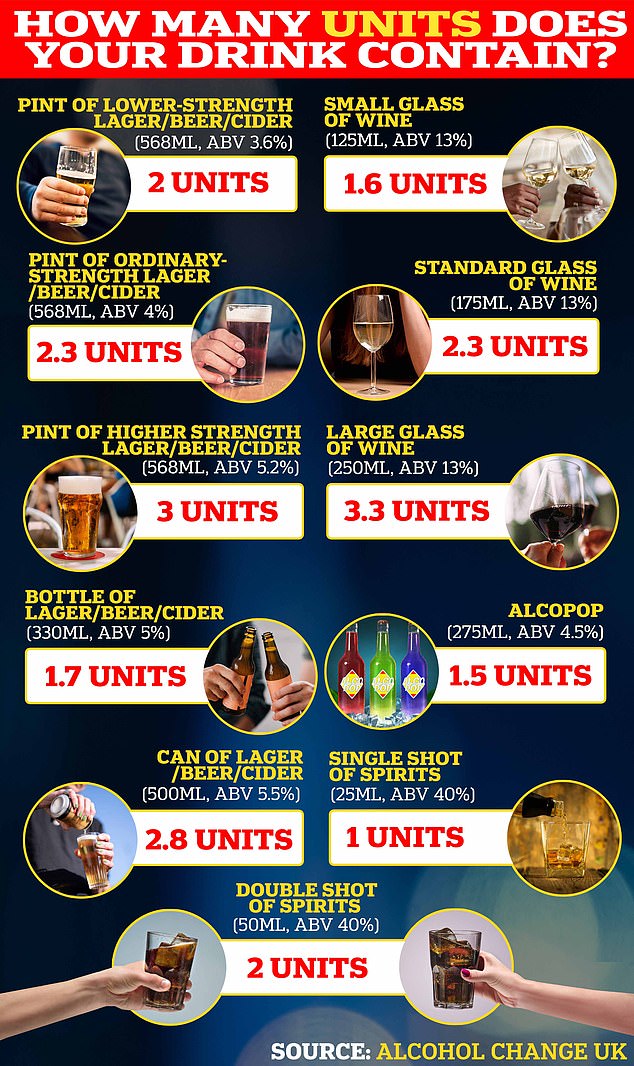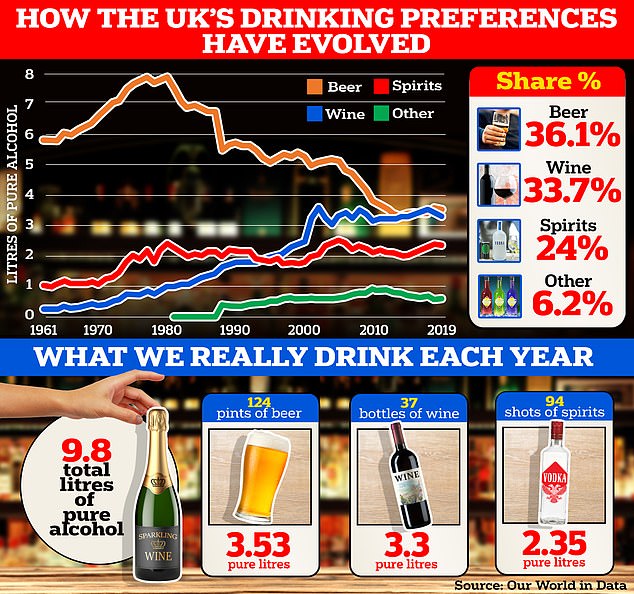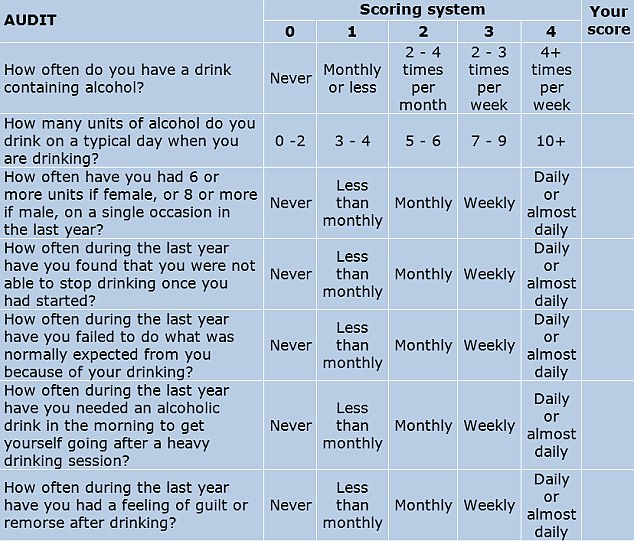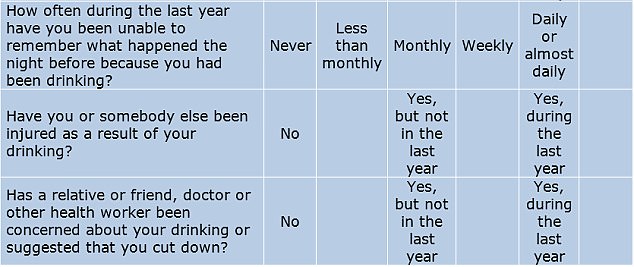Non-alcoholic beer, wine and cocktails can be a stepping stone to real life for young people, research shows
Research shows that non-alcoholic drinks can be a ‘gateway’ to the real thing for young people.
Australian experts, who surveyed more than 600 teenagers, found that more than half of them found alcohol-free products appealing and more than one in three had tried them.
Some teens also told researchers they were concerned that their peers would become “addicted” to the taste of alcoholic beverages from non-alcoholic alternatives and, as a result, drink more once they turned 18.
The researchers say the findings highlight the need to be careful with non-alcoholic beers, wines and cocktails, lest they become a “Trojan horse” for young people getting to know the real thing.
This is because non-alcoholic drinks have grown in popularity in the UK in recent years and have become an increasingly popular alternative to alcohol among health-conscious consumers.
Experts in Australia who monitored the behaviour of more than 600 non-alcoholic teenagers found reports of paranoia and even fear of drinking such drinks, with one claiming they could ‘get younger people hooked’
The British Beer and Pub Association, which represents pubs and breweries, said sales of low- and no-alcohol beer were set to rise by 15 per cent by 2022. The sector has seen 520 per cent growth over the past decade.
Writing in the diary PullAccording to the Australian researchers, the increasing popularity of such drinks should be viewed with caution.
‘The current findings highlight the need to approach non-alcoholic products with caution and devise strategies to boost their potential as a harm reduction tool while ensuring they do not negatively impact minors by acting as a Trojan horse for the industry,’ the researchers said.
“By finding this balance, we can minimize the potential risks of these increasingly popular products.”
Julia Stafford, vice-chair of the Australian Cancer Council’s nutrition, alcohol and physical activity committee, which conducted the research, added: ‘We already know that the more children and young people are exposed to alcohol marketing, the more likely they are to start drinking alcohol and, if they do drink alcohol, the more likely they are to drink in a risky way.
‘Alcohol use, in any amount, can increase the risk of cancer.
Alcohol brands claim that their non-alcoholic products are only aimed at adults, but research shows that young people often identify their own age group as the group that most appeals to these products.
‘There are currently no standards that restrict the way they mimic alcohol products, and there are no restrictions on marketing or sales. That means young people can buy these products and be exposed to marketing in highly visible places, such as supermarkets.
“This environment poses a risk to the public health of young Australians.”
In the study, researchers conducted five online focus groups with 44 Australian teenagers aged 15 to 17 years to gain insight into their experiences with non-alcoholic products.
They then surveyed 679 adolescents of the same age online about their opinions on the alcohol-free products.
Experts found that more than a third (37 percent) of teens surveyed had not tried any alcohol products at all, with more than half (56 percent) saying they felt they looked attractive.
Four out of five teens also remembered seeing the products for sale.
A 15- or 16-year-old boy told researchers, “I think younger people are getting addicted to non-alcoholic beverages, like non-alcoholic beers, and maybe they’re drinking beer when they’re 18.”
A 16 or 17-year-old girl added: ‘You don’t want kids to like the taste of alcohol and drink it, because that will actually encourage them to drink more alcohol later in life because they really like it.’
Another girl, also aged 16-17, said: ‘I feel like kids are very impressionable when they’re around 14 and 15, and if they start drinking at a younger age, they’ll want to start drinking alcohol.

The NHS recommends that people drink no more than 14 ‘units’ of alcohol — around six glasses of wine or pints of beer — a week. This has been relaxed in recent decades in light of studies illustrating the health risks of alcohol
‘For them, drinking non-alcoholic drinks feels like a stepping stone to drinking real alcohol.’
According to the researchers, parents can also encourage their children to drink more in the future by sharing such drinks with them at home.
‘If children do not drink alcoholic beverages at home in the company of their parents, this may normalize the consumption of alcoholic products and create positive experiences around the use of alcoholic products,’ the researchers said.
However, the authors acknowledged that the study had “some limitations,” including the fact that it used only online surveys, which “could limit the representativeness of the survey.”
They added that their research was based on Australian teenagers and therefore may not be applicable to other groups.
Additionally, it’s possible that the teens who participated in the study may not have told the truth about things like their alcohol-free or zero-alcohol consumption habits, which could have affected the results.
Non-alcoholic alternative beverages, such as non-alcoholic beers, wines and cocktails, are often seen as a healthy alternative for adults.
But a MailOnline investigation last year found they aren’t always as healthy as consumers might think, with some low-alcohol and alcohol-free drinks containing up to ten times more sugar than their full-fat alternatives.
In March, researchers from the University of York also said there was not yet enough data on consumer behaviour towards alcohol-free and low-alcohol drinks to say they were a healthy alternative to alcohol.

The latest data, collected by the World Health Organization and compiled by Oxford University’s Our World in Data platform, shows that wine consumption in the UK has risen to 3.3 litres of pure alcohol per year (2019), up from the 0.3 litres recorded almost 60 years earlier in 1961. It now accounts for more than a third (33.7 per cent) of all alcohol consumed across the country, almost on par with beer (36 per cent), which has fallen from the 5.8 litres recorded in 1961 to 3.5 litres today.
Leading experts have been debating the dangers of moderate alcohol consumption for decades.
Last year, the topic came into the spotlight when WHO officials warned that no amount of alcohol is safe.
However, scientists agree that excessive alcohol consumption can cause permanent damage to the liver, cause several forms of cancer and increase blood pressure.
The NHS recommends that people drink no more than 14 ‘units’ of alcohol – about six glasses of wine or pints of beer – per week.
However, this idea has been weakened in recent decades due to studies showing the health risks of alcohol.
Meanwhile, the US says women should drink no more than seven standard drinks per week and men 14..
These amounts include a medium glass of wine and 340 ml of beer, which is roughly the size of a normal bottle.


